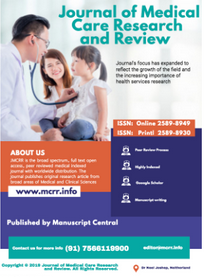Faecal-oral transmission of SARS-CoV-2: a threat to Latin America?
Abstract
We are living in times when a viral pandemic has stopped normal life in much of the world. The new viral agent named Coronavirus 2 of the Severe Acute Respiratory Syndrome (SARS-CoV-2), was found to be the cause of the so-called Coronavirus Disease 2019 (COVID-19). This new coronavirus is closely related to other emerging zoonotic coronaviruses, such as the etiological agent of Severe Acute Respiratory Syndrome (SARS-CoV) and the Coronavirus related to the Middle East Respiratory Syndrome (MERS-CoV), which can cause disease severe in humans (1). Early symptoms in most COVID-19 patients include fever, dyspnea, cough, and sore throat, which can progress to pneumonia in severe cases. Other symptoms such as some gastrointestinal manifestations, including diarrhea, are less frequent (2).
Respiratory droplets and contact transmission are considered the most important routes of transmission of COVID-19 but do not fully explain the occurrence of all cases and the rapid spread of this new virus (3). Recently, some studies have reported evidence of the presence of SARS-CoV-2 RNA in feces and wastewater, which raises the possibility of faecal-oral transmission of COVID-19. Some investigations have shown that the positivity of SARS-CoV-2 in the feces remains between 7 and 33 days after the samples of nasopharyngeal swabs were negative, increasing the possibility that the virus is transmitted through contaminated fomites (4, 5). Other studies have managed to isolate the virus present in the feces, determining the viability of the virus in these samples, showing the potential risk of faecal-oral contagion (3). Another associated intrinsic concern is the possibility of mechanical transmission of insect-mediated SARS-CoV-2. Vectors such as flies and cockroaches circulate in environments where feces are present and may carry viruses on their body and in their intestinal tract, contaminating surfaces (6).
In recent months, studies have emerged where they detect the genetic material of SARS-CoV-2 in wastewater (7). However, there is still no evidence of the viability of SARS-CoV-2 in these water sources. A study conducted on SARS-CoV during the outbreak in 2003 showed that the virus remains active in running water for 10 days at 23°C, while at low temperatures of 4°C the viability of the virus can reach up to 100 days. In wastewater, the viability of the virus decreases by 99.99% between 2-3 days at temperatures ~20°C and up to 14 days at 4°C (8). Considering the above, three possible environmental routes have been proposed for faecal-oral transmission of SARS-CoV-2 in humans from the feces. Within the main routes, it is found, the water, the surfaces, and the contact with the places where the vector insects circulate. From these environments, through different routes, viruses can reach the mouth and infect the intestinal and respiratory tracts of a susceptible host (9).
To date, there have been no reports of humans contracting the SARS-CoV-2 virus through faecal-oral transmission, however, this possible mechanism itself represents a potential risk for the spread and transmission of COVID-19 in the Latin American context, considering that about 191 million people are living in poverty and 72 million in extreme poverty. This means that 30.8% of Latin Americans are poor, and 11.5% are extremely poor. This supposes that part of the population does not have the necessary resources such as food, drinking water, or managed sanitation (10). Additionally, disadvantaged people are more likely to live in overcrowded accommodation, with poor housing conditions, limited access to personal outdoor space, and overcrowding, factors that increase exposure to COVID-19.
In conclusion, despite the need for more studies, if the "faecal-oral hypothesis" is confirmed as a transmission mechanism for COVID-19, it may result in far-reaching consequences for public health and pandemic control, especially in regions with fragile health systems such as Latin America, so studies are required to evaluate the influence of environmental factors on COVID-19 in the region.
Full text article
References
2. Guan W-j, Ni Z-y, Hu Y, Liang W-h, Ou C-q, He J-x, et al. Clinical characteristics of coronavirus disease 2019 in China. N Engl J Med. 2020;382(18):1708-20. PubMed PMID: 32109013
3. Zhang Y, Chen C, Zhu S, Shu C, Wang D, Song J, et al. Isolation of 2019-nCoV from a stool specimen of a laboratory-confirmed case of the coronavirus disease 2019 (COVID-19). China CDC Weekly. 2020;2:123-4.
4. Chen Y, Chen L, Deng Q, Zhang G, Wu K, Ni L, et al. The presence of SARS-CoV-2 RNA in the feces of COVID-19 patients. J Med Virol. 2020;92(7):833-40. PubMed PMID: 32243607
5. Wu Y, Guo C, Tang L, Hong Z, Zhou J, Dong X, et al. Prolonged presence of SARS-CoV-2 viral RNA in faecal samples. Lancet Gastroenterol Hepatol. 2020;5(5):434-5. PubMed PMID: 32199469
6. Dehghani R, Kassiri H. A brief review on the possible role of houseflies and cockroaches in the mechanical transmission of coronavirus disease (COVID-19). Arch Clin Infect Dis. 2020;15(COVID-19):e102863
7. Medema G, Heijnen L, Elsinga G, Italiaander R, Brouwer A. Presence of SARS-Coronavirus-2 in sewage. medRxiv. 2020:2020.03.29.20045880.
8. Gundy PM, Gerba CP, Pepper IL. Survival of coronaviruses in water and wastewater. Food Environ Virol. 2009;1(1):10.
9. Heller L, Mota CR, Greco DB. COVID-19 faecal-oral transmission: Are we asking the right questions? Sci Total Environ. 2020;729:138919. PubMed PMID: 32353720
10. Comisión Económica para América Latina y el Caribe (CEPAL), Panorama Social de América Latina, 2019 (LC/PUB.2019/22-P/Re v.1), Santiago, 2019.

